Serving 762 students in grades 6-12, Gray Stone Day ranks in the top 10% of all schools in North Carolina for overall test scores (math proficiency is top 10%, and reading proficiency is top 10%).
The percentage of students achieving proficiency in math is 80% (which is higher than the North Carolina state average of 51%). The percentage of students achieving proficiency in reading/language arts is 80% (which is higher than the North Carolina state average of 50%).
The student:teacher ratio of 18:1 is higher than the North Carolina state level of 15:1.
Minority enrollment is 19% of the student body (majority Hispanic), which is lower than the North Carolina state average of 57% (majority Black).
Quick Stats (2025)
- School Type: Charter School
- Grades: 6-12
- Enrollment: 762 students
- Student:Teacher Ratio: 18:1
- Minority Enrollment: 19%
- Graduation Rate: 90-94% (Top 20% in NC)
- Overall Testing Rank: Top 10%
- Math Proficiency: 80% (Top 10%)
- Reading Proficiency: 80% (Top 10%)
- Science Proficiency: ≥95% (Top 1%)
- Source: National Center for Education Statistics (NCES), NC Dept. of Education
Top Rankings
Gray Stone Day ranks among the top 20% of public schools in North Carolina for:
Category
Attribute
Overall Rank
Math Proficiency
Reading/Language Arts Proficiency
Science Proficiency
Graduation Rate
School Overview
Gray Stone Day's student population of 762 students has declined by 8% over five school years.
The teacher population of 43 teachers has declined by 10% over five school years.
School Type
Grades Offered
Grades 6-12
Total Students
762 students

Gender %
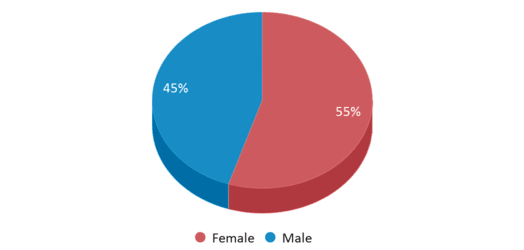
Total Classroom Teachers
43 teachers
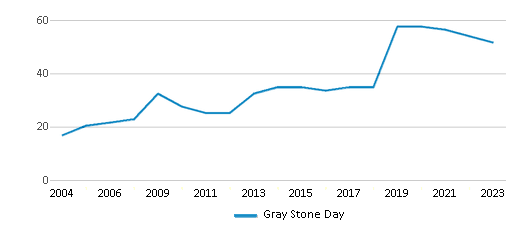
Students by Grade
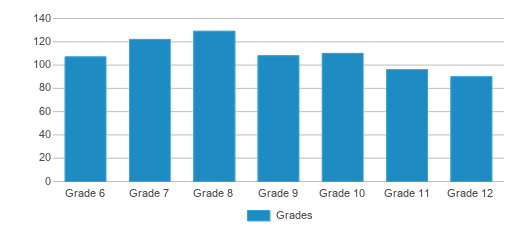
School Rankings
Gray Stone Day ranks within the top 10% of all 2,617 schools in North Carolina (based off of combined math and reading proficiency testing data).
The diversity score of Gray Stone Day is 0.34, which is less than the diversity score at state average of 0.71. The school's diversity has stayed relatively flat over five school years.
Overall Testing Rank
#166 out of 2617 schools
(Top 10%)
(Top 10%)
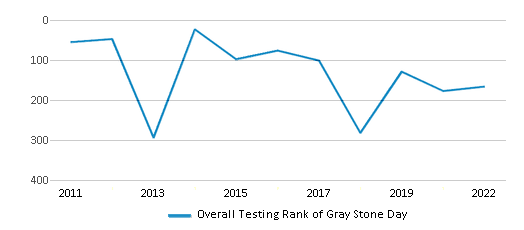
Math Test Scores (% Proficient)
80%
51%

Reading/Language Arts Test Scores (% Proficient)
80%
50%
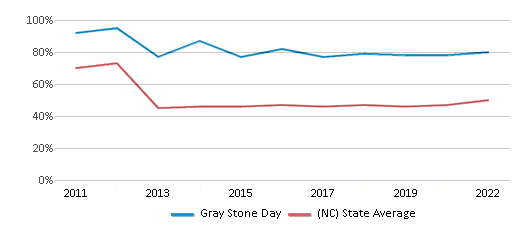
Science Test Scores (% Proficient)
≥95%
63%
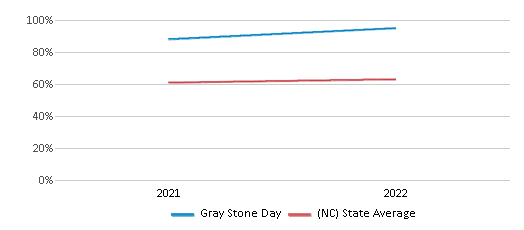
Student : Teacher Ratio
18:1
15:1
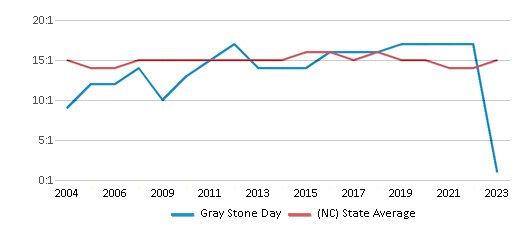
American Indian
n/a
1%
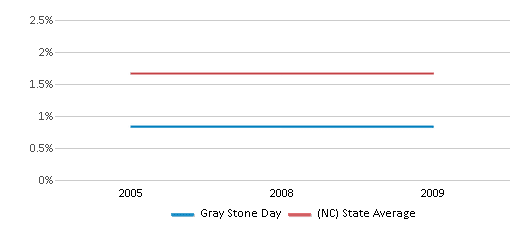
Asian
3%
4%
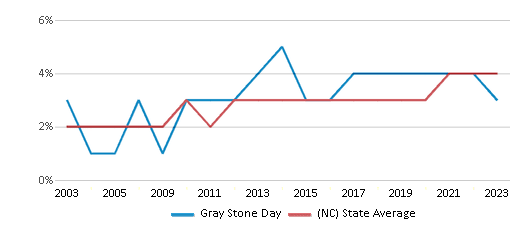
Hispanic
8%
21%
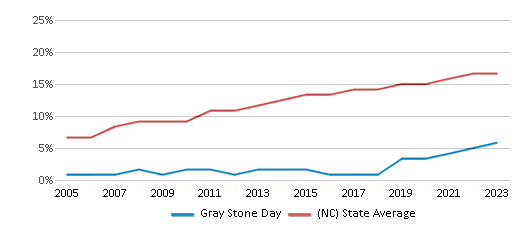
Black
2%
25%
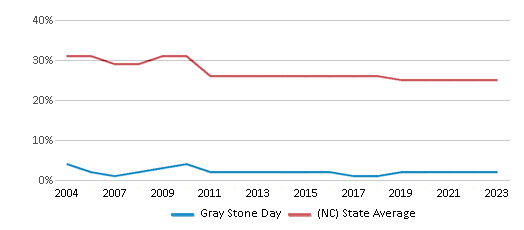
White
81%
43%
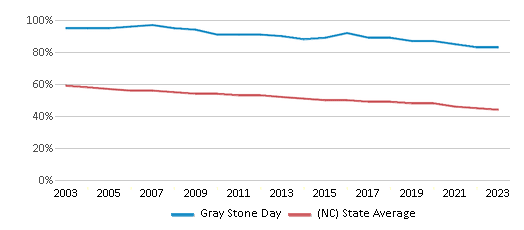
Hawaiian
n/a
n/a
Two or more races
6%
6%
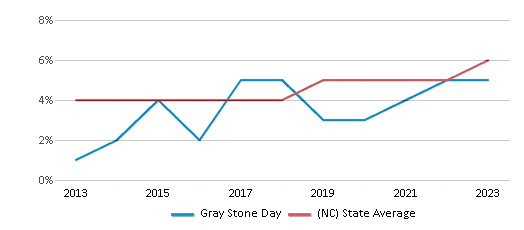
All Ethnic Groups

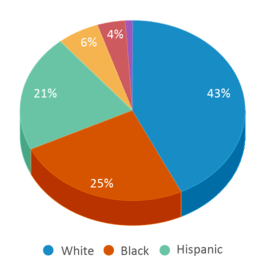
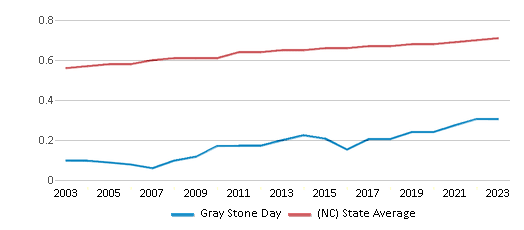
Graduation Rate
90-94%
86%
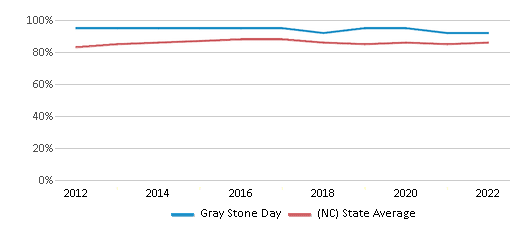
Eligible for Free Lunch
3%
68%
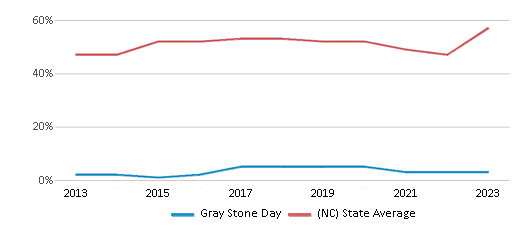
Eligible for Reduced Lunch
5%
1%
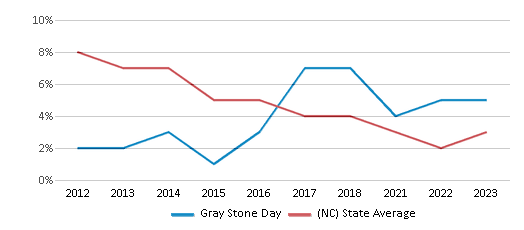
School Statewide Testing
School District Name
Source: National Center for Education Statistics (NCES), NC Dept. of Education
Profile last updated: 02/09/2025
Frequently Asked Questions
What is Gray Stone Day's ranking?
Gray Stone Day is ranked #166 out of 2,617 schools, which ranks it among the top 10% of public schools in North Carolina.
What schools are Gray Stone Day often compared to?
Gray Stone Dayis often viewed alongside schools like Albemarle High School by visitors of our site.
What percent of students have achieved state testing proficiency in math and reading?
80% of students have achieved math proficiency (compared to the 51% NC state average), while 80% of students have achieved reading proficiency (compared to the 50% NC state average).
What is the graduation rate of Gray Stone Day?
The graduation rate of Gray Stone Day is 90-94%, which is higher than the North Carolina state average of 86%.
How many students attend Gray Stone Day?
762 students attend Gray Stone Day.
What is the racial composition of the student body?
81% of Gray Stone Day students are White, 8% of students are Hispanic, 6% of students are Two or more races, 3% of students are Asian, and 2% of students are Black.
What is the student:teacher ratio of Gray Stone Day?
Gray Stone Day has a student ration of 18:1, which is higher than the North Carolina state average of 15:1.
What grades does Gray Stone Day offer ?
Gray Stone Day offers enrollment in grades 6-12
What school district is Gray Stone Day part of?
Gray Stone Day is part of Gray Stone Day School District.
School Reviews
2 5/12/2016
Gray Stone Day School, as a parent of a former student, I would not recommend this school. The school staff brags about a high-quality public education filled with integrity, yet the leadership does not practice what they preach. Your child may even find themselves in a closed room with the 'Associate Director' who will refuse to let them leave until they tell him what he wants to here!!! Does this sound like a high-quality public education filled with integrity to you? Doesn't even sound ethical to me!!!
5 12/15/2008
I believe that this is a great school and I would recommend it to anyone in the area. I currently attend the school and have seen no problems. The classes are moderately difficult, but no so much to be unbearable to most students. There are many clubs and the school offers all sports but football and wrestling. Our athletics have begun to be competitive to the other schools in our divison. As for teachers, all of the ones I have had have been terrific. Overall, I believe this is the best high school in the area.
Review Gray Stone Day. Reviews should be a few sentences in length. Please include any comments on:
- Quality of academic programs, teachers, and facilities
- Availability of music, art, sports and other extracurricular activities
Recent Articles

What Is A Charter School?
Explore the world of charter schools in this comprehensive guide. Learn about their history, how they operate, and the pros and cons of this educational innovation. Discover key facts about charter schools, including admission policies, demographics, and funding, as well as what to look for when considering a charter school for your child.

10 Reasons Why High School Sports Benefit Students
Discover the 10 compelling reasons why high school sports are beneficial for students. This comprehensive article explores how athletics enhance academic performance, foster personal growth, and develop crucial life skills. From improved fitness and time management to leadership development and community representation, learn why participating in high school sports can be a game-changer for students' overall success and well-being.

February 05, 2025
Understanding the U.S. Department of Education: Structure, Impact, and EvolutionWe explore how the Department of Education shapes American education, from its cabinet-level leadership to its impact on millions of students, written for general audiences seeking clarity on this vital institution.









